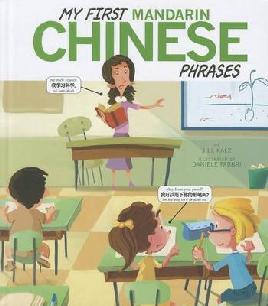The Chinese language has a reputation for being one of the most difficult languages in the world to master. If you have learned Chinese, you can literally talk to nearly 1.2 billion people, which is around 16% of the world’s population.
To prepare you for New Zealand Chinese Language Week (12-18 September), I thought these words and phrases might guide you into the wonderful and rather complex world of Mandarin Chinese.
About the Chinese language
 Pinyin is the official phonetic system for transcribing the Mandarin pronunciations of Chinese characters into the Latin alphabet.
Pinyin is the official phonetic system for transcribing the Mandarin pronunciations of Chinese characters into the Latin alphabet.
Four tones of Mandarin Chinese - each Pinyin has four tones and each tone often represents one or more characters, this is probably one of the hardest parts of learning Mandarin Chinese.
Basic words and phrases
| English | Character | Pinyin | Tones |
| Hello | 你好 | nǐ hǎo | Both 3rd - falling then rising |
| Thank you | 谢谢 | xiè xiè | Both 4th tone - falling |
| Goodbye | 再见 | zài jiàn | Both 4th tone- falling |
| Free (no charge) | 免费 | miǎn fèi | 3rd+4th - Falling rising + falling |
| One | 一 | yī | 1st tone - high & level |
| Two | 二 | èr | 4th tone - falling |
| Three | 三 | sān | 1st tone - high & level |
| Okay | 好的 | hǎo de | 3rd + no tone - falling then rising + no tone (short sound) |
| Christchurch | 基督城 | jī dū chéng | 1st+1st+2nd - high & level + high & level + rising |
| Library/Libraries | 图书馆 | tú shū guǎn | 2nd +1st+3rd - rising + high & level + falling then rising |
| Useful phrases | |||
| Hen gao xing ren shi ni! 很高兴认识你! Nice to meet/know you! | |||
| Xin nian kuai le! 新年快乐! Happy New Year! | |||
| Wo hen xi huan! 我很喜欢! I really like it! | |||
| Yi lu ping an! 一路平安! Have a safe journey! | |||
| Shen ti jian kang! 身体健康! Wish you good health! | |||
| Wan shi ru yi! 万事如意! Everything goes well as your wish! | |||
Traditional and Simplified Chinese
Traditional and Simplified Chinese refer to the written text of Chinese characters. Traditional characters, as the name suggests, had traditionally been used for many years since ancient China. Nowadays they are most commonly used in Taiwan, Hong Kong and Macau.
Simplified characters evolved and were adopted after the establishment of today’s P. R. China in 1949, so you could call it a relatively “modern form”. They are mainly used in mainland China, Singapore and Malaysia. Here is a quick comparisons of both forms:
| Traditional | Simplified |
| 樂 | 乐 (happy) |
| 馬 | 马 (horse) |
| 爺 | 爷 (grandpa) |
The debate on the use of traditional and simplified Chinese characters is ongoing. Supporters from both sides would argue over the political and cultural implications, as well as practicality and personal preferences.
Chinese language resources at Christchurch City Libraries:
- English-Chinese dictionaries
- Chinese language courses with audio
- Mandarin Chinese Conversation and Phrase books
- World Languages Collection – find the libraries with a Chinese Collection
- Mango Languages – Learning Chinese made easy
- PressReader – Read newspapers from China and around the world
New Zealand Chinese Language Week events at Christchurch City Libraries
There are a number of Chinese-themed events taking place at our libraries during New Zealand Chinese Language Week, including bilingual storytimes, a tai chi demonstration and fun craft activities.
See our online calendar for New Zealand Chinese Language Week events
读书破万卷, 下笔如有神 (Ample reading produces fluent writing) - 杜甫
Yang Song
Māori and Cultural Services




Add a comment to: Celebrating New Zealand Chinese Language Week 2016 新西兰中文周